第67章 CHAPTER XXII(1)
From El Tovar To The Havasupai Indians And Their Wonderful Cataract Canyon Homes Havasu Canyon. The Grand Canyon has two important tributary canyons. The most important of these is the Havasu Chic-i-mi-mi (canyon of the blue water). This is where the Havasupai Indians live.
First White Visitor. The first white man to visit the Havasu, as far as we know, was Padre Francisco Garces, of whom I have written in another chapter. Four times he made long journeys into the interior, visiting a large number of Indian tribes. Among these were the Wallapais and the Havasupais.
Garces' Diary. Dr. Elliott Coues, who visited the Havasupais in 1881 with a governmental party, has translated Garces' diary, and it was published a short time ago by Francis P. Harper, of New York. In this translation, he describes the descent of his (Coues's) party into the Canyon, and his description is so vivid that it is well worth repetition here.
Dr. Coues' Description of Trail to Havasu Canyon. "On the 10th, a march of ten miles in the same direction brought us abruptly to the brink of the precipice--a sharp-edged jump-off of perhaps a thousand feet. There was no side canyon here for gradual descent; the firm level ground gave no hint of the break before us until we were actually upon the verge, and when the soldiers lined up to look down an involuntary murmur of astonishment ran through the ranks. Dismounting and going in single file, each man leading his horse, we took the dizzy trail--a narrow footpath, in many parts of which a misstep would have been destruction to man or beast. The way zigzagged at first for some distance, on the 'switchback' principle by which railroads sometimes make grades otherwise impracticable; the face of the precipice was so steep that, as we filed along, those of us at the head of the procession looked up to see the other sections of the train almost overhead; certainly a fall of any man there would have been right on top of us. Then the trail took a long lurch to the left with little descent, hugging the face of the cliff, and we looked like a row of ants on a wall.
This brought us at length to the head of a great talus, down which the trail zigzagged--the incline was too steep for straight descent, probably at an angle of forty-five degrees. This fetched us into the bed of Cataract Canyon, perfectly dry. The trail was nearly a mile long, and it took us an hour to make our creepy way down. The Havasupai chief, who had been advised of our coming, was there to meet us with some of his men, all mounted; and he took us up the canyon about five miles to a place where there was a scanty aguage, not sufficing for the wants of the whole party.
Next morning we retraced our steps down the canyon and kept on in its bed until we reached the wonderful blue spring above described and the wonderful rancheria of the Indians, a distance from last night's camp of about twenty-five miles, as we had struck the canyon some twenty miles above the living water."Other Trails to the Canyon. Garces came into the canyon by another trail, entirely distinct from this, commonly known as the Wallapai Trail. He left Havasu Canyon by still another trail, known as the Moki Trail, which leads directly from this canyon to the home of the Hopis.
In 1857, Lieutenant Joseph C. Ives made the descent into Havasu Canyon down the Wallapai Trail. His account of the journey reads like a novel, and people who are unfamiliar with the wonderful engineering feats of the Havasu Indians can scarcely believe that Ives did not allow his imagination to run away with him, in his descriptions of the Havasupais' trails.
Later, Lieutenant Cushing, guided by his Indian friends, rode across country to the Hopis, and then secured a Hopi guide who took him to see the Havasupais over the Moki Trail. He confirms all that Ives and Coues have written of the astonishing character of these trails. Having been up and down these trails many times during the last dozen years, I can say without hesitation that there are no more startling trails to be found in our Southwest.
Trip from El Tovar. One of the most enjoyable of the more arduous trips taken by visitors to El Tovar is this trip to Havasu (Cataract) Canyon.
Only those who enjoy a strenuous outing should arrange for this trip, and then plenty of time should be allowed to do it without too great rushing.
The first portion, to the head of the Topocobya Trail, is generally done in a buckboard. The distance is thirty-five to forty miles, over a varying road,--good in places, fair in others, and wretchedly poor now and again.
Arrived at the "hill-top," as the Indians call this point, the conveyance must be abandoned, and all the outfit for sleeping, cooking, and eating is transferred to the backs of pack animals, which have been sent on ahead.
The visitors take saddle animals. There are those who make this drive, and then ride to the village, fifteen miles further down the trail, in one day.